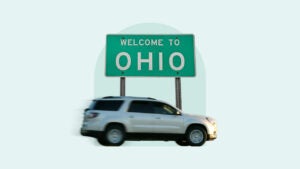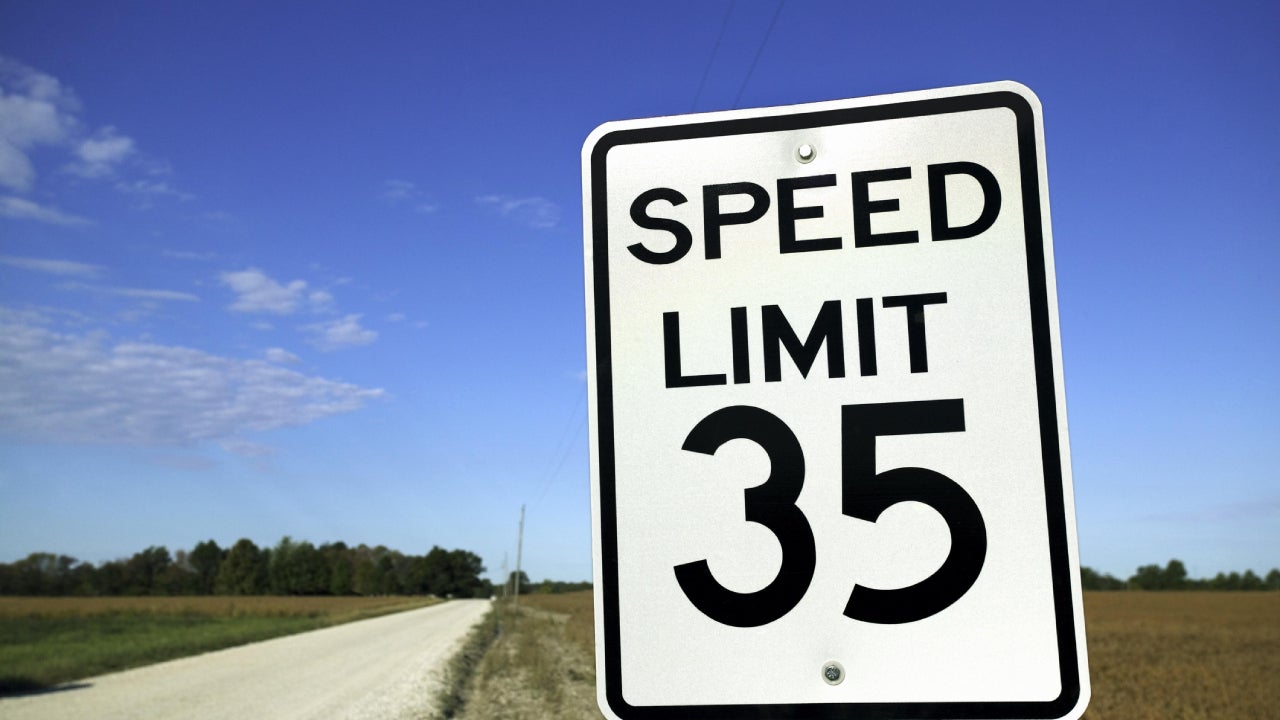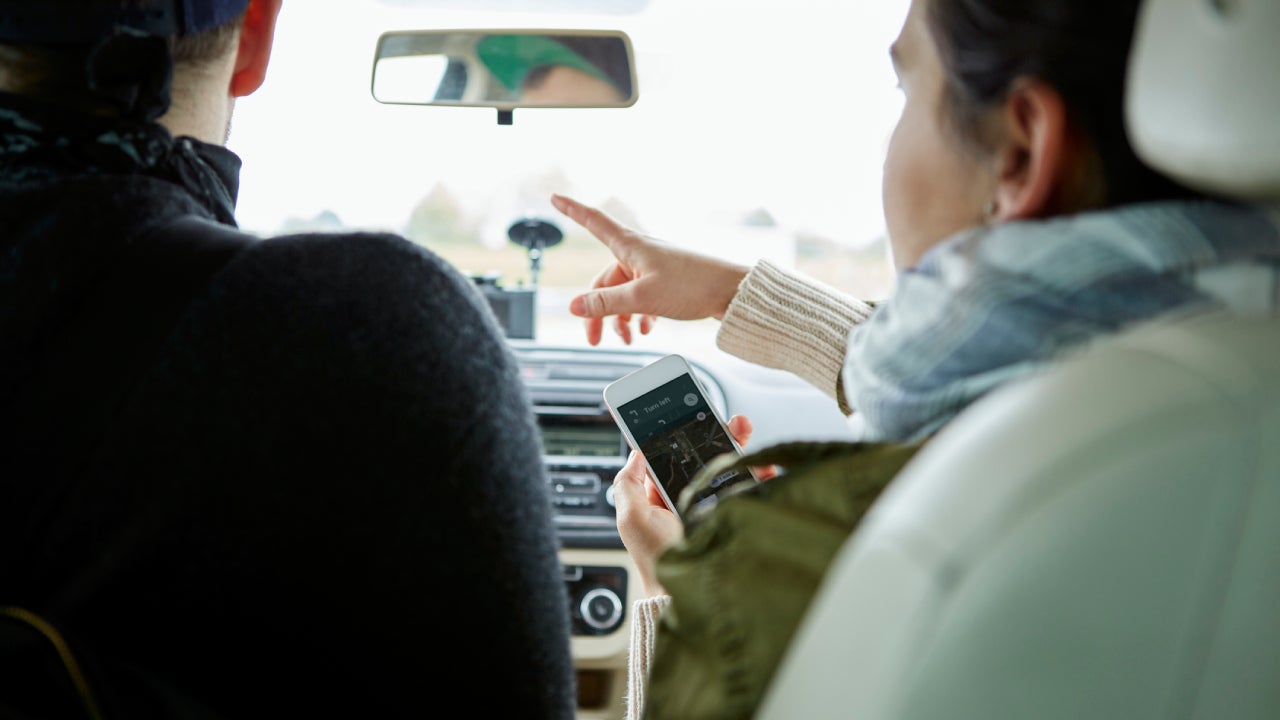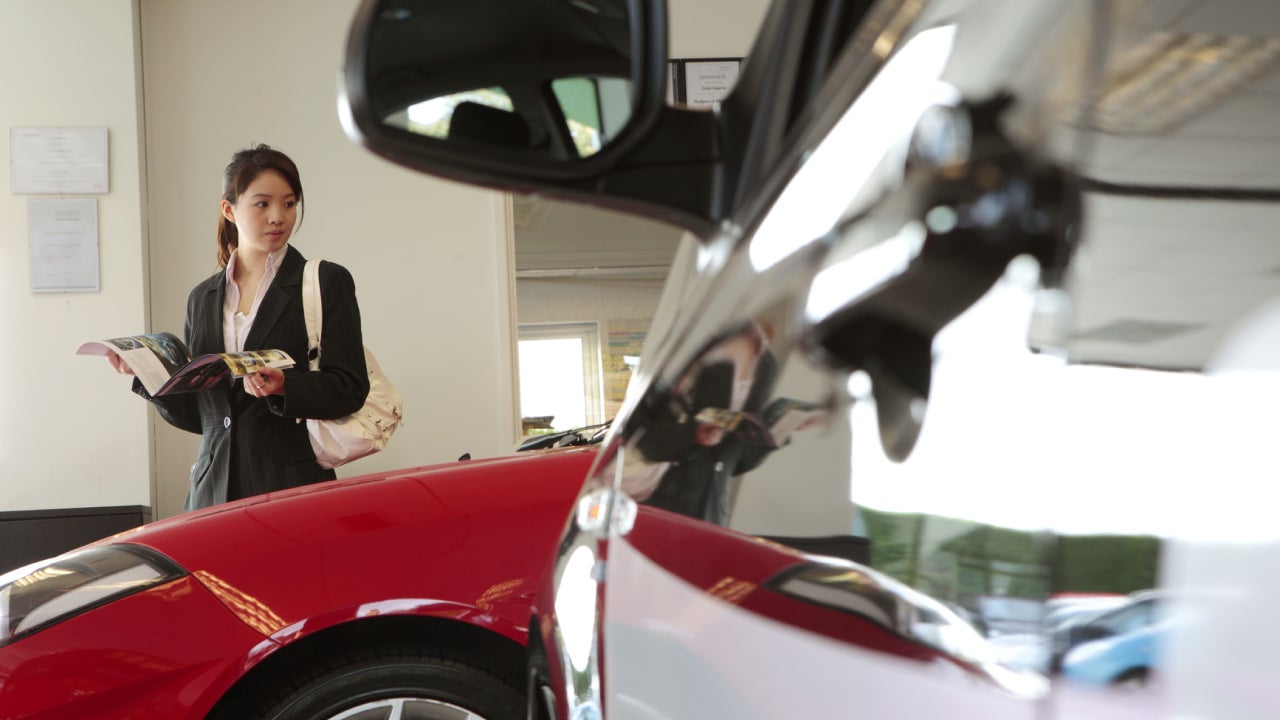Hitting the road for the holidays? What to know about car insurance and road trips

- 28% of U.S. adults traveling for the holidays are driving instead of flying due to inflation. (Bankrate 2024 Holiday Travel Survey)
- 8% of Americans plan to fly for Thanksgiving, and 14% plan to fly for the December holidays. (Bankrate 2024 Holiday Travel Survey)
- Your car insurance policy will cover you if you drive to a different state or Canada, but you’ll need special coverage for a road trip to Mexico.
- Pets may be covered in case of an accident, but it’s important to check with your auto insurance company or get a pet insurance policy.
The newest holiday tradition isn’t putting an elf on the shelf or choosing tofu over turkey — it’s driving. Bankrate’s 2024 Holiday Travel Survey found that 28 percent of U.S. adults traveling for the holidays are driving instead of flying due to higher prices. In total, more than 4 in 5 (83 percent) of holiday travelers are changing their plans because of inflation.
Opting to drive instead of fly could help you dodge sky-high holiday travel prices, but there are some insurance implications to consider before you hit the road. Bankrate’s insurance editorial team made a list of the need-to-know info (and checked it twice), so you can drive with some financial peace of mind.
Driving vs. flying for the holidays
Folks planning on flying for the holiday are expecting to pay a pretty penny. Thanksgiving fliers expect to pay an average of $925, while those flying in December expect to pay an eye-watering $1,165, according to Bankrate’s 2024 Holiday Travel Survey.
It’s easy to see these numbers and want to pass on air travel. But, is flying really the more affordable alternative this holiday season? While getting behind the wheel of your car might sound easier than making the trek to the airport and ensuring all your liquids are under three ounces, there are some extra costs to consider:
- Gas: Fuel costs can add up fast on a road trip. How much you spend on gas will depend on your vehicle, the distance you drive and the terrain. Before you go, you can enter the start and end points of your holiday road trip into a fuel estimator to see what you’ll likely pay. As of October 2024, the national average cost of gas is $3.15 a gallon.
- Food: Snacks are, arguably, one of the best parts of a road trip. While you won’t have to face airport food prices, grabbing a bite on the road may not always be cheap. From 2019 to 2024, the average cost of a McDonald’s Big Mac has increased by over 20 percent.
- Time commitment: It may not come out of your bank account, but hours spent in a car do come at a cost. Flying is technically faster than driving in terms of miles traveled, not including flight delays.
What’s more, statistically speaking, driving is more dangerous than flying. The International Civil Aviation Organization reports that the air travel fatality rate is 17 people per billion passengers. The likelihood of a fatal car crash is much higher — around 1 in 93 according to the National Safety Council.
Granted, not every car accident is so grim. Sometimes, an accident is little more than a nuisance. Your car insurance can help financially protect you from unexpected events on the open road, but there are some things to consider about your policy before you decide to drive this winter.
Does car insurance cover you in a different state?
In short, yes. If your car insurance policy is valid, you are covered. Here’s how it works.
Car insurance is regulated by each state, rather than at the federal level. This is why minimum coverage requirements differ throughout the U.S. and why some states have no-fault rules after an accident. But when you cross state lines, something called a broadening clause kicks in, wherein your policy coverage limits automatically adhere to the minimum coverage laws of the state you’re driving in.
Say you have a minimum coverage car insurance policy in California — $15K per person and $30K per accident in bodily injury liability and $5K in property damage liability. You are driving to see family in Nevada, where minimum coverage limits are higher. Once you cross into Nevada, your policy limits will automatically adhere to the state’s minimum insurance requirements — $25K per person and $50K per accident in bodily injury liability and $20K in property damage liability — without you needing to make any changes to your policy.
And if you opted to purchase higher liability limits? Yes, they apply regardless of the state you’re driving in. Keep in mind liability coverage only pays to help cover damage and injuries others incur in an accident you cause. It won’t pay to repair or replace your own vehicle — for that, you’ll need full coverage insurance, which typically includes collision and comprehensive coverage.
If I drive to another country, does my car insurance cover me?
Whether your car insurance policy covers you internationally will depend on where you drive. If you’re driving to Canada, your car insurance policy should cover you while you’re in the U.S.’s neighbor to the north. Canada and the United States have a reciprocal agreement for car insurance, meaning U.S. policies are valid there and Canadian policies are valid here.
Mexico, on the other hand, is a different story. Mexico and the U.S. do not have a reciprocal agreement. Your car insurance policy won’t be valid in Mexico. In fact, you’d be considered an uninsured driver by Mexican authorities, which could have serious consequences. Not only would you be financially on the hook for damage or injuries resulting from an accident you caused, but you’d also face fines and possible jail time.
Thankfully, it is pretty easy to get Mexican car insurance online. In fact, you may even be able to add it to your policy as an endorsement from your current provider, especially if you live somewhere that touches the Mexican border:
| U.S. insurance company | Mexican insurance partner(s) |
|---|---|
| AAA | Grupo Nacional Provincial |
| Allstate | Grupo Nacional Provincial and El Aguila Compania de Seguros |
| American Family | Grupo Nacional Provincial and El Aguila Compania de Seguros |
| Geico | Grupo Nacional Provincial and El Aguila Compania de Seguros |
| The General | ABA Seguros, SA de C.V., ACE Seguros and Grupo Nacional Provincial |
| Liberty Mutual | Mexpro |
| Progressive | Mexpro |
Roadside assistance and car insurance
Driving could be a cheaper option than flying this year, but that doesn’t guarantee a smooth journey. Traffic jams, poor weather and an uptick in accidents can not only cause delays but could also be dangerous. The National Safety Council predicted 507 traffic fatalities for the 2023 Thanksgiving travel period (the Wednesday before to the Sunday following the holiday) and 345 for Christmas Day that same year.
The national average cost of a full coverage car insurance policy is $2,388 per year, as of October 2024. Minimum coverage costs an average of $664 per year, per data from Quadrant Information Services. Your car insurance provider may offer roadside assistance for an extra charge, which can help with some snafus insurance may not cover. If you blow a tire, run out of gas, need a tow, your car battery dies or you’re in another bind, roadside assistance can come in handy. Importantly, roadside assistance is not for emergencies: 911 is for emergencies, and roadside assistance is for inconveniences. If roadside assistance is not offered by your car insurance company, you may be able to get it through your credit card company, a member organization like AAA or directly through your vehicle manufacturer.
Driving with pets
Airlines can charge an arm and a leg to allow your furry friends onboard. Southwest Airlines, for instance, charges $125 per pet carrier one way. Driving with your pet may be less hectic, especially if there’s room in your car for them to spread out comfortably. However, while it’s not pleasant to think about, if you’re in an accident, there’s a chance your pet could be injured, and vet bills can get expensive.
Car insurance may be able to help with pet injuries. Technically speaking, your insurance company sees your pet as your personal property. If you are not at fault for the accident, your four-legged friend may be covered under the at-fault driver’s property damage liability coverage.
But, if you are at fault for an accident, you may have less luck. It’s possible that your pet can be covered under your collision coverage — remember, that helps pay to repair or replace your vehicle and property. But, this will likely need to be stated explicitly in your policy in order to apply. If you’re driving with a pet, consider getting a pet insurance policy for any unexpected injuries or illnesses. Or, see if your car insurance company offers a pet endorsement.
Why we ask for feedback Your feedback helps us improve our content and services. It takes less than a minute to complete.
Your responses are anonymous and will only be used for improving our website.
You may also like

How a speeding ticket impacts your insurance in Ohio

How a speeding ticket impacts your insurance in Missouri

Temporary car insurance in New York

Do you need insurance to buy a car?


